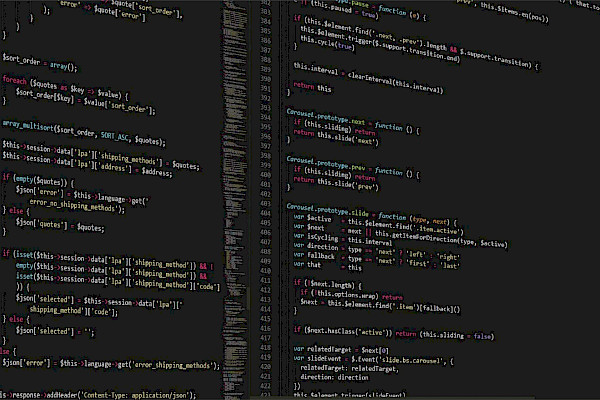
Basics of Writing Good SEO Content
 We live in the information age and humans are information addicts. We need answers to our questions and solutions to our problems and we need them right now. Our constant huger for more up to date information is what makes blogs so popular. Blogs that does not provide any value, any quality content have little or no chance of being noticed and will never grow a following. In other words they will have a hard time getting traffic.
We live in the information age and humans are information addicts. We need answers to our questions and solutions to our problems and we need them right now. Our constant huger for more up to date information is what makes blogs so popular. Blogs that does not provide any value, any quality content have little or no chance of being noticed and will never grow a following. In other words they will have a hard time getting traffic.Bloggers have a lot of different options when it comes to driving traffic to their posts. Organic traffic from search engines is free and can reach awesome levels why I believe it worth investing some time in understanding how it really works. Unfortunately it takes some time for a blog to earn the needed credibility and trust and more importantly it requires 100% original and high quality content that readers like. You see search engines today are smart and more sophisticated than we can imagine and they know what their users like.
Having said that it is important for bloggers to understand how search engines work and to practice search engine optimizations aka SEO to make sure their content is indexed and easily categorized and understood be search engine spiders. There is of course a balance here that needs to be maintained as too much and too smart SEO will make a blog look suspicious to search engines which for sure have negative impact on traffic.
Guide on Writing Balanced Content
As a blogger you may experience that it can be a challenge to both satisfy the needs of your readers and at the same time implement SEO best practice. The good question is what the right balance is and if it exists. I think that Google and other search engines are moving against giving good rankings to content that their users like. This means that your key focus should be to focus on providing value and make readers stay on your site as long as possible (low bounce rate/high number of pages per visit), come back often etc. You see Google is a data monster and by providing Analytics for free they get a lot of valuable information about what goes on after search users left the search result page. If a page that looks perfect cannot keep visitors on the site for a few minutes it may not be as good as it looks.
OK so we know that a blog writer needs to divide the focus in article writing into at least the two following categories:
1. Reader-friendly content
2. SEO-friendly content
Lets look at some of the most important considerations you should make to maintain the balance.
Reader-friendly Content
As a writer, you should be aware of SEO techniques but then again, at the end of the day you are writing for human readers so it should be user-friendly and your articles should first of all serve this purpose. You need to make sure that you keep readers both happy and encourage them to come back for more and take active part in the conversation.
Keep It Interesting
Readers are capable of finding hundreds of relevant articles online in a few minutes so give them a good reason to read yours. In order to make the article interesting you need to understand the expectations of your target audience. Providing sufficient content is not that hard but it is very important to grab the reader and keep things interesting for him till the end. This of course requires you to to proper research on the topics you write about and that you keep the following in mind:
- Keep it relevant for your readers (don’t write about everything – specialize and be special)
- Covering topics that are generally hot at the moment (cover interesting news, events when they are still boiling hot)
- Make list posts and provide comparison and best of ________ to solve _________ problem…
- Make your headline catchy, sticky and impossible to miss
Keep It Simple – From A Reader’s Perspective
Do not get into a lot of philosophies in an article unless required. You should always keep the article simple and understandable for your target audience. Make sure you read a lot on the topic before you write on one. Therefore, try to:
- separate the content in sections and sub-sections
- make smaller paragraphs
- try to use bullets and numberings when discussing points
- make it as brain-bothering as possible
Remember, you are not writing for yourself, you are writing for others to read so it is important for them to understand. Also typically readers are busy and it must be possible to skim through the sections and bullets to quickly see if reading in more details is worth the effort.
Keep It Short
Nothing can be more annoying than never ending articles so you need to keep it as short as possible while still informative and interesting. You are not writing to prove that you are a good writer. You are writing for readers and to provide them information and if you can convey your message in short text, you are on the right track.
Add Relevant Images
In order to make it more interesting for the readers you should add images in every paragraph or heading. Images develop an interest level of readers. Also, pictures that support the text well can be great for delivering the message effectively and in a pleasant way for the reader. So if you need to keep it short and simple, images can be of great help.
Be Original
Do not copy content from the internet as being original should be the USP of your blog. Readers will only visit your blog if they will find it different and interesting in comparison to other websites. Also Google just updated their algorithms and they have declared war against low quality and duplicated content. This is not the same as not being inspired by other bloggers I just recommend that you write it in your own words, link to the source and hopefully someone will start linking back to you. This will give you both referral traffic and new readers, but also in terms of SEO “natural backlinks”.
SEO-friendly Content
One of the major sources of traffic being redirected to your website is through Search Engines. Google crawlers are basically content detectors and they detect the fresh content everyday which means your position on Google is never stable. Therefore, apart from writing articles which are user friendly, you need to write articles which are SEO-friendly as well.
Also, in this particular article, we have focused on ‘On Page SEO Ranking Factors’, which is an integral part of the SEO world. Although ‘Off Page SEO Ranking / Link Building’ also plays a vital role, however, it is not covered in this post.
You might also have a look at WordPress SEO Guideline, in which Lars has shared some really useful rules for SEO best practices over the WordPress.
Track Keywords and Use Them Accordingly
You need to keep track of the keywords and use them according to their popularity. Keywords are the integral part of SEO and the position of your website depends on the keywords you have used in your article. So while you are writing article, make sure you do some keyword analysis and use the right and appropriate number of keywords in your articles. I recommend that you read this article from Andy on doing professional keyword analysis to rank well in search engines
Talk the language of the Crawlers
The structure of your content should be extremely clear for readers as well as for crawlers. The crawlers would love your article if it is well delimited. There are certain rules when it comes to SEO that needs to be respected. Make sure that the title of the article (<title></title>) is concise and relevant to the content of the article. Also, relevant subtitles (<h1>,<h2>) play a very important part in putting a good show of your content to the crawlers. You should also use hyperlinks or quotation marks. For all of these on page tags you need to add the keywords you use on your SEO campaigns as early as possible in them. Also add alt tags to your images as it helps the crawlers to understand if the images are relevant to the content.
Finally the meta content is important to get right, In particular the description as it is used be search engines on the raning pages (SERPs) to provide a description of the page. Keep in mind though that it should never be more than 160 characters as it will be truncated.
Oven-fresh Content
A writer should be able to differentiate between blog writing and website writing. Crawlers hate to read the same content over and over again so you need to come up with a fresh content as it is like a food for crawlers. If you are writing a blog, you have a huge scope of coming up with something new and spicy. Regular posts with a fixed schedule work magic on SEO raking, and make your blog a favorite food for crawlers. However, changing posts is not at all recommended unless, ofcourse, they rank really badly.
Link Relevant Content with Related Posts
Linking of websites is a great way to improve your position on search engines. Whenever you write a blog, link the relevant content with Related Posts on your blog. Linking not only improves your position in the SEO but also makes your reader stay at your blog for quite some time and check out other posts as well. Having the right keywords in the anchor text of links is essential as it tells the search engines that the link is relevant to the content.
Conclusion
As said earlier, you are writing for human readers at the end of the day so they should be able to easily understand your content and to relate to it. Try to keep a balance between reader-friendly for the readers and SEO-friendly getting better SEO rankings. One thing you should always keep in mind is that modern crawler will try to read your content like any human being and you should not try to fool it. Let people read, enjoy and share your work as this is the long term strategy and what in the end will be good for your ranking position.
For all your website design and development needs, feel free to contact Farend, your reliable IT partner.
The above article was originally published at: http://www.39articles.net/seo-basics-and-writing-seo-friendly-content/
